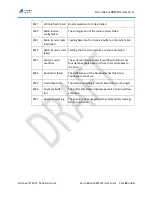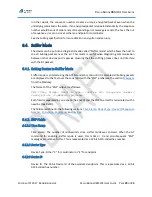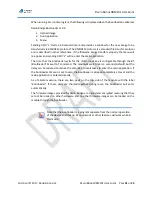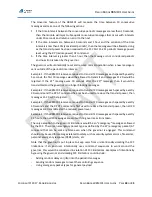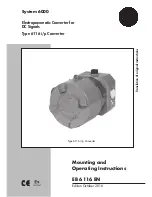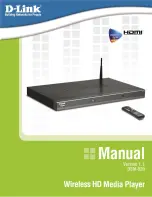
R
ADIO
B
RIDGE
RBM101
U
SER
G
UIDE
C
OPYRIGHT
©
2017,
R
ADIO
B
RIDGE
I
NC
.
R
ADIO
B
RIDGE
RBM101
U
SER
G
UIDE
P
AGE
27
OF
35
the supervisory message will be sent automatically back to the coordinator on this periodic
interval.
When the timeout is set on a coordinator, this indicates the interval in which it expects a
supervisory to have arrived from all endpoints. The timers used for supervisory messages are
low power RC timers which have significant drift, and thus the coordinator period must be set
at a longer period than the endpoints.
A typical configuration is to set the timeout of all endpoints to one hour and the coordinator
to be set at 1.5 hours. If the coordinator does not see a supervisory message from an endpoint
within the timeout period, it will send a message back to the host. See the section on
Error
Messages
for more detail.
6.2.2.
Supervisory Messages Occurrence
The supervisory messages occur automatically in the background and do not require periodic
commands from a host after the initial timeout periods have been set. The coordinator will
send messages back to a host on an as-needed basis to indicate that an endpoint has not
reported within the last window, if an endpoint has started reporting again after a period of
not reporting, or if a supervisor message has arrived from a sleepy endpoint. See the
Error
Messages
and
Status Messages
sections for more detail.
The supervisory messages also signal a window of time that a coordinator can communicate
back to a sleepy endpoint. See the section
Sleep Modes
for more detail.
6.3.
Security and Encryption
For systems that require higher levels of security, the SubGig standard allows for messages to
be AES encrypted.
6.3.1.
Session Key
The “session” key is the key that is used to encrypt normal traffic and this can be written to
each device prior to deployment in the field, or the key can be broadcast from the coordinator
to the endpoint during installation.
6.3.2.
Provisioning Key
In the case of a key broadcast in the field, the session key itself would be encrypted by a
“provisioning” key that is assigned pr
ior to deployment in the field.
6.3.3.
Encryption Requirements
The SubGig standard does not allow for unencrypted keys to be broadcast over a wireless link.
Thus, either the session key itself or a provisioning key must be programmed into each device
prior to deployment in the field using the associated AT commands.












